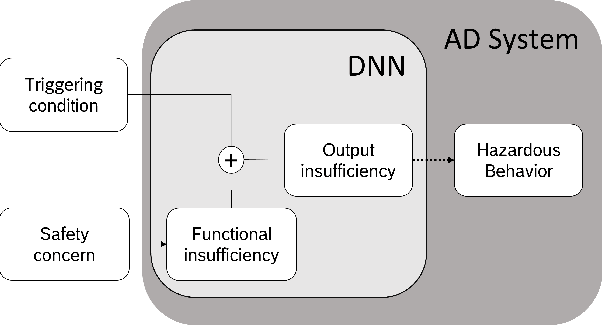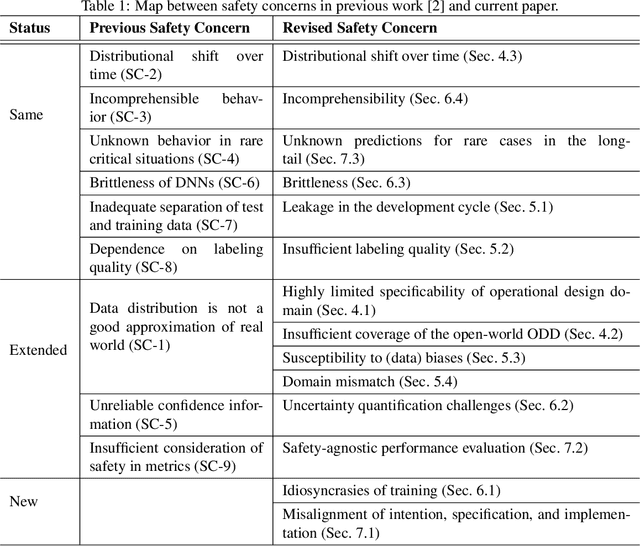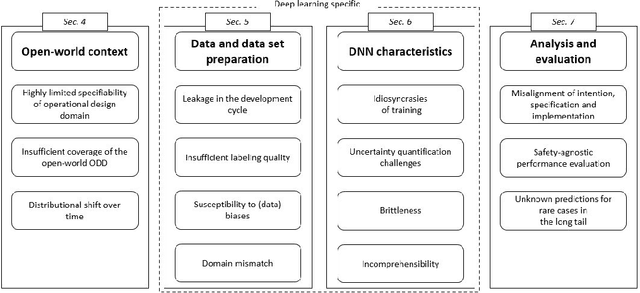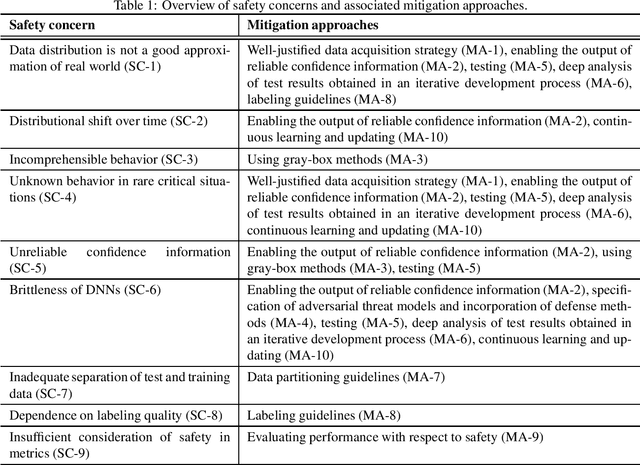Shervin Raafatnia
Deep Learning Safety Concerns in Automated Driving Perception
Sep 07, 2023


Abstract:Recent advances in the field of deep learning and impressive performance of deep neural networks (DNNs) for perception have resulted in an increased demand for their use in automated driving (AD) systems. The safety of such systems is of utmost importance and thus requires to consider the unique properties of DNNs. In order to achieve safety of AD systems with DNN-based perception components in a systematic and comprehensive approach, so-called safety concerns have been introduced as a suitable structuring element. On the one hand, the concept of safety concerns is -- by design -- well aligned to existing standards relevant for safety of AD systems such as ISO 21448 (SOTIF). On the other hand, it has already inspired several academic publications and upcoming standards on AI safety such as ISO PAS 8800. While the concept of safety concerns has been previously introduced, this paper extends and refines it, leveraging feedback from various domain and safety experts in the field. In particular, this paper introduces an additional categorization for a better understanding as well as enabling cross-functional teams to jointly address the concerns.
Safety Concerns and Mitigation Approaches Regarding the Use of Deep Learning in Safety-Critical Perception Tasks
Jan 22, 2020

Abstract:Deep learning methods are widely regarded as indispensable when it comes to designing perception pipelines for autonomous agents such as robots, drones or automated vehicles. The main reasons, however, for deep learning not being used for autonomous agents at large scale already are safety concerns. Deep learning approaches typically exhibit a black-box behavior which makes it hard for them to be evaluated with respect to safety-critical aspects. While there have been some work on safety in deep learning, most papers typically focus on high-level safety concerns. In this work, we seek to dive into the safety concerns of deep learning methods and present a concise enumeration on a deeply technical level. Additionally, we present extensive discussions on possible mitigation methods and give an outlook regarding what mitigation methods are still missing in order to facilitate an argumentation for the safety of a deep learning method.
 Add to Chrome
Add to Chrome Add to Firefox
Add to Firefox Add to Edge
Add to Edge